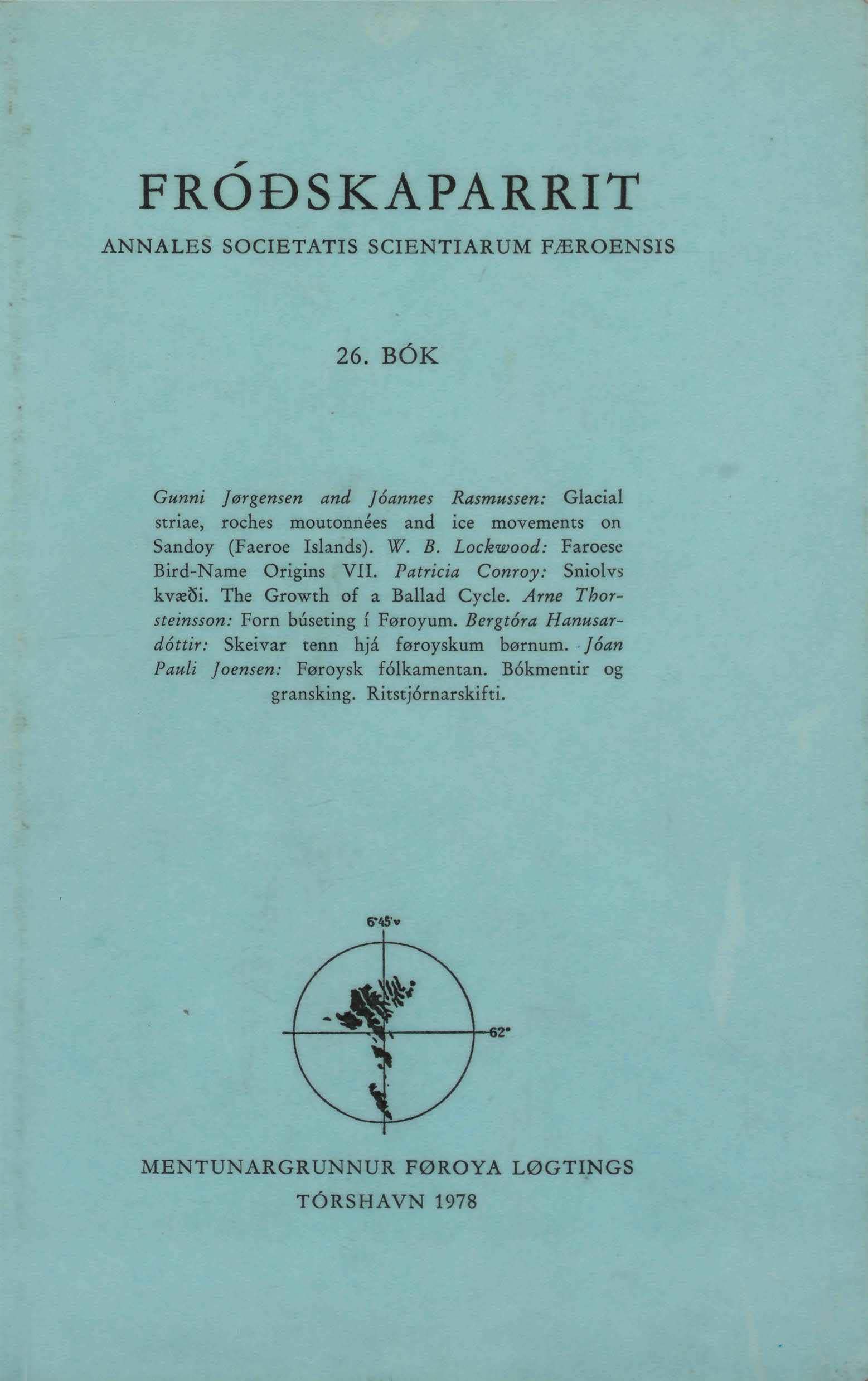Skeivar tenn hjá føroyskum børnum
##plugins.themes.bootstrap3.article.main##
##plugins.themes.bootstrap3.article.sidebar##
Abstract
The purpose of this study was to determine the prevalence of malocclusion in Faroese children with deciduous and permanent dentition, to examine sex differences in the prevalence rates, and to compare the prevalence rates of Faroese children to those of Danish children.
The registration was made during the winter 1975—76 and covered 217 pre-school children and 591 school children from the 8th classes of Faroese schools excepting those on Suðuroy. The school children were grouped according to extraction of permanent teeth and orthodontic treatment.
The studied group included only those who had received neither of these treatments (120 girls and 138 boys). Tables 1—8.
The registrations were made according to the method of Bjørk, Krebs & Solow (1963) for »Epidemiological Registration of Malocclusion«. After the examination, the data were checked for logically incompatible recordings.
The frequencies of the different traits of malocclusion were determined by means of computer programs developed by Solow & Helm (Solow 1964, Solow & Helm 1968), although rewritten to a BASIC version for this study. The pre-school children had few dentional anomalies, but high frequencies of occlusal and space anomalies. Every third child had extreme maxillary overjet, frontal open bite and distal molar occlusion, while 12 °/o had cross-bite, 36 % had spacing in the upper jaw and 33 °/o spacing
in the lower jaw. Only 2 pre-school children had crowding (tables 13, 16 and 19).
The school children had higher frequencies of dentional anomalies, deep bite, scissors bite and crowding, equal frequencies of distal molar occlusion and cross-bite, and lower frequencies of extreme maxillary overjet, frontal open bite and spacing than the pre-school children (tables 14, 15, 17, 18, 20 and 21).
Compared to the Danish pre-school children, the Faroese pre-school children had higher frequencies of frontal open bite, more mesial molar occlusion, less distal molar occlusion, fewer rotations and less spacing. The Faroese school children had higher frequencies of ectopic eruption, inversion of incisors, distal molar occlusion and spacing, and lower frequencies of rotations and midline displacement than the Danish school children (tables 22—25). All differences mentioned were statistically significant.
The investigation included questionnaires which were answered by the school-children and by the parents of the pre-school children. Tables 26—28 list the need of and demand for orthodontic treatment.
##plugins.themes.bootstrap3.article.details##

This work is licensed under a Creative Commons Attribution-NonCommercial-ShareAlike 4.0 International License.
